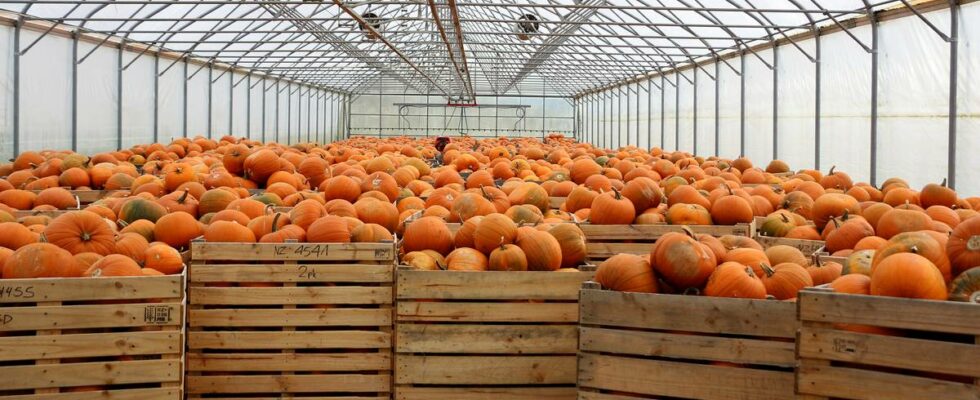Well-trained weightlifters were hired when the pumpkin championship was held in Copenhagen last weekend. Peter Holst Olsen ran away with the victory, with an orange giant weighing 1,115.8 kilograms – which is a new record in the Nordics. One of Norway’s largest pumpkin producers, Linnes Gård in Lier, cannot compare with that, but in total they pull many hundreds of tonnes out of the soil. – It is very easy to make large pumpkins, but we try to limit ourselves to varieties that do not grow too large. You should ideally be able to carry them out of the shop, says Ragnhild Nærstad. Ragnhild Nærstad advises people not to throw away the leftovers after making pumpkin decorations for Halloween. Photo: Eirik Koren / news Over 300,000 pumpkins There are autumn colors outside on the farm, but also inside the greenhouses and in the warehouse. Nærstad and 30 employees are surrounded by the orange fruit. She estimates that this year they have produced 200,000 Halloween pumpkins, 70,000 Hokkaido pumpkins and 50,000 spaghetti pumpkins. – We’ve had a pretty intense season, so I hope we’ll get a bit calmer when the rush before Halloween is over, says Nærstad. There is no doubt that the trick-or-treating holiday has a large part of the credit for the pumpkin boom in the country. – We have been dealing with pumpkins for 20 years, and consumption has increased every year. Halloween is probably the biggest driving force in growth, but fortunately we have also gained more focus on pumpkin food. 30 workers are on the move during the rush at Linnes Gård. Photo: Eirik Koren / news Don’t throw away the pulp According to archaeological findings, pumpkins were grown in America 5-6,000 years ago. Most Norwegians probably first associate the fruit with Halloween decorations, but it can actually also be eaten. The pulp is yellow or orange, firm and sweet. Many people throw away the remains when you have carved out the Halloween artwork, but there is no reason for that, says Nærstad. – Pumpkin is food. You should try to use it as best you can. The Halloween pumpkin has such a mild flavor that it can be used for almost anything. It can be filling in cakes, it can be mash or you can fry or boil it. If there are several types At Linnes Gård, they sow the seeds in May, and then they are planted out a few weeks later. The pumpkins then need plenty of water and nutrition throughout the summer. Internationally, there are far more types than what is common in Norway, in many different shapes and colors. – There are large quantities of pumpkins in production here in Norway, and the largest producers drive out several semi-trailers every day now, says Ragnhild Eri, project manager at Norgro. She says that there are 10–12 farms in Norway that deal professionally with pumpkins. According to figures from the Information Office for Fruit and Vegetables, around 2,000 tonnes of pumpkins are grown in Norway each year, a sharp increase from 534 tonnes in 2016. Ragnhild Nærstad hopes that much ends up in the trash, there will be less in the future. Published 22.10.2024, at 17.19
ttn-69
Lier farmer sells more pumpkins than ever – news Buskerud – Local news, TV and radio

